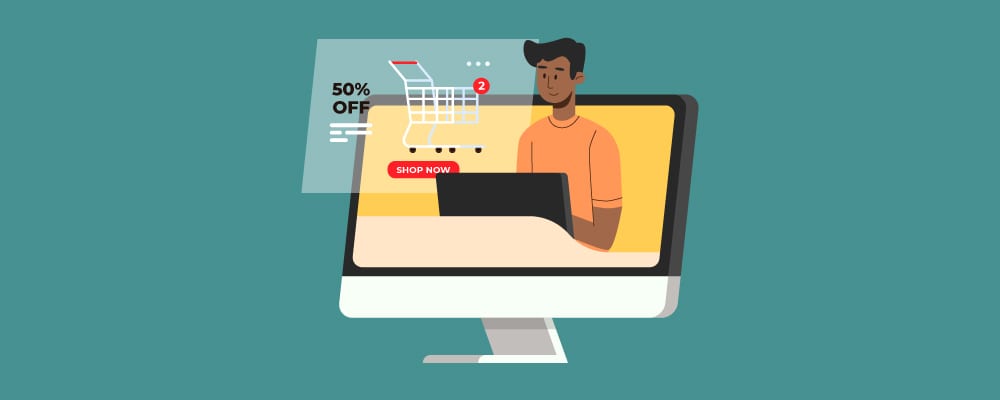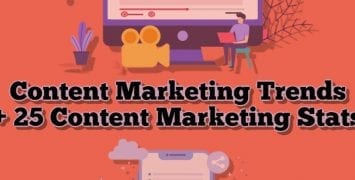If someone visits your website and then leaves without making a purchase, are they still considered a potential customer?
In many cases, yes.
Retargeting is a way to draw previous visitors back to your website. Done correctly, retargeting can address concerns and turn a potential customer into a lifelong brand loyalist.
New to retargeting? Already using retargeting but looking for ways to improve? Here’s everything you need to know:

Step 1: Identify Your Audience
Your first step is to narrow your focus. There are a few different ways you can conduct a retargeting campaign. The most common audiences for retargeting are:
- Visitors to your landing page who didn’t opt-in or sign up
- Visitors to your product pages who didn’t make a purchase
- Previous customers who have already made at least one purchase from you.
Identifying your audience allows you to tailor your campaigns more effectively. The success of your campaign will mainly be driven by small details. So the better you can identify your audience the easier you’ll be able to reach them.

Step 2: Plot a Course of Action
You need to know what action you want your audience to take. Ultimately, retargeting is designed to sell your products or services. But how you appeal to your audience will vary.
For reoccurring customers, you’ll typically be guiding your customers towards one of these two types of purchases:
- An upsell related to the product the customer already owns
- A renewal related to a service the customer subscribes to
Not all your retargeting efforts will be directed towards people who have previously purchased a product. You’ll also direct a lot of retargeting efforts towards people who have visited your site or otherwise seen your content but haven’t bought anything.

Step 3: Identify Reasons for Customer Bounce
Potential customers use your content to form an impression of your brand the product or service you’re selling.
This process is called the Conversion Funnel. Potential customers are presented content in a specific way, usually going from general information to a progressively harder sell. For more information, check out Boost Sales by Building a Conversion Funnel for a complete guide.
As part of the Conversion Funnel, you’ll obtain a potential customer’s email address pretty early on. This going to be an important part of your retargeting strategy. You’ll be sending specific emails, with links to specific landing pages, in an attempt to persuade potential customers to give your brand another chance.
With retargeting, the customer has already bounced. But if you know why they bounced, you can adjust your retargeting efforts to address their concern directly.
The specifics of why a customer bounces can often be inferred from when they leave the conversion funnel. The last point of contact usually indicates where the customer felt frustrated enough to abandon the sale.
While some of these specifics will obviously be tied directly to your site and brand, there are a few common reasons a customer will bounce. They are:
- Concerns about security (with the customer’s personal information and payment security)
- Technical problems
- Long, complicated or otherwise unappealing forms
- Slow processes (too many pages to fill out, slow loading times)
- Pricing problems (price changing during checkout due to shipping, hidden charges, etc.)
The better you can understand the customer’s concerns, the more effective you can address those concerns. Learning the best way to connect with your customer base involves creating a Buyer Persona.
Every time a potential customer thinks about leaving your site, but is persuaded to view just one more piece of content instead, you’re that much closer to making a sale.

Step 4: Connect with Your Customer
Your retargeting efforts will be unique to the situation. For instance, if the potential customer bounces due to price, you can offer them a discount. If they left because of security concerns, you can improve your site security and improve security notice placement on your site.
Connecting with Existing Customers
Existing customers are the easiest to connect with. They should already have a positive impression of your brand. Send them a direct email advertising an upgrade to an existing product, a discount on a complimentary one or something else related to their purchase history.
Connecting with Potential Customers
For potential customer who haven’t made a purchase yet, your emails and other contact will be tailored towards their specific concerns. Not everyone bounces for the same reasons! You’ll want to create several templates for common bounce reasons.
You have to understand your audience in order to create copy which will connect with them. What problem are they hoping to solve by using your product? What will motivate them to take action?
For instance, some people are motivated by Social Proof. This group will respond to user reviews, testimonials and other claims from real people.
The email you send should not only address concerns, it should also include a link to a custom landing page. This page will include additional targeted content. Check out How to Create Landing Pages that Convert for additional help here.
Keep a uniform look and style between your email and its associated landing page. This helps create a professional image.

Step 5: Rotate Your Ads
Once you get a handle on retargeting, you can choose to expand your strategy by rotating your ads. After all, no retargeting campaign will work with 100% of your target audience. This doesn’t mean those people won’t respond to future retargeting, however.
You can develop a range of ads – such as Social Proof ads – to attempt to engage with your potential customer in a few slightly different ways.
Retargeting is Effective
Retargeting is an effective way to help attract new customers while requiring very little new content. First, you’ll need to develop an effective conversion funnel. Then you identify when customers bounce as they move through the funnel.
These are the customers you’ll re-target with emails, deals and custom landing pages. A key part of persuading these customers is addressing their concerns about the sale. Developing a Customer Profile is a tremendous help in creating a personal connection.
Retargeting is a great way to reach an audience which has already shown interest in your products – and then convincing them to convert.
Any retargeting tips and tricks? Share your strategies in the comments below.





